( No Title )
The Innovations of Fleischer Studios
Besides changing the face of animation by bringing the world the invention of the Rotoscope, as well as the concept and animation technique of “Follow the Bouncing Ball” sing-alongs, Max Fleischer and his studio also pioneered a revolutionary technique in animation, known as the “Stereoptical Process”.
In this process, a circular, 3-D model of a background – a diorama – is built to the scale of the animation cells. It allowed for a spectacular sense of depth and dimension, long before Ub Iwerks came up with the Multiplane. Within the model setup, the animation cells could be placed at varying levels from the scenery, and even between objects, so that foreground elements could pass in front of them, adding to the dimensional effect. It was an effective method for panning and tracking shots, which would require a turn of the table with each photographed cell of animation.
The process was used in many of the studio’s cartoons, particularly in their longer, “two-reel” shorts, such as Popeye the Sailor Meets Sindbad the Sailor (1936), Popeye the Sailor Meets Ali Baba’s Forty Thieves (1937), and Betty Boop in Poor Cinderella (1934) – the only color (albeit in two-strip Cinecolor), theatrical cartoon ever made starring the iconic animated songstress, which features her as a redhead!
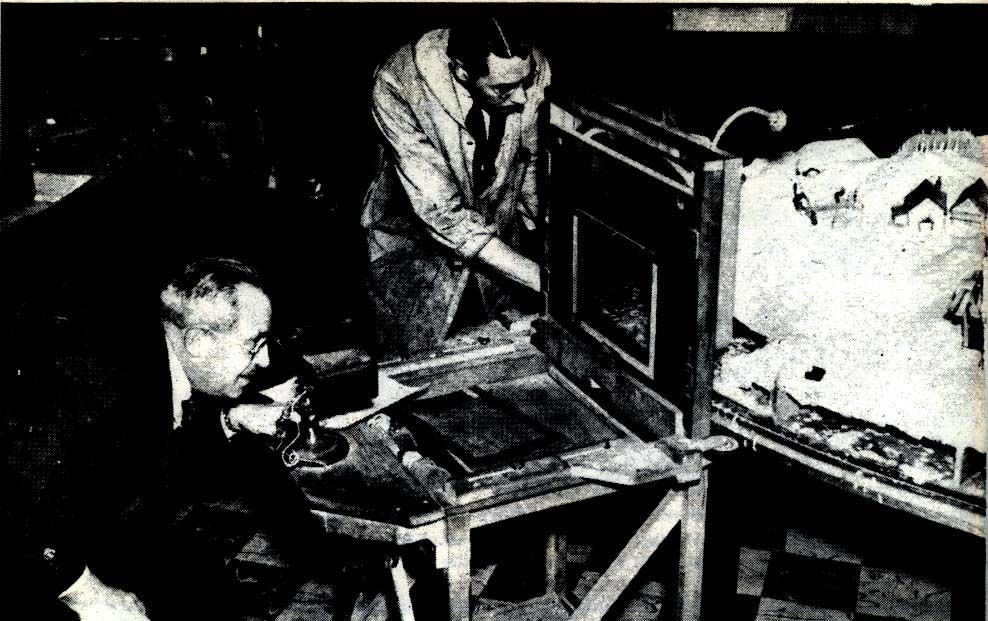

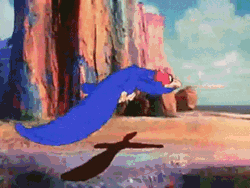
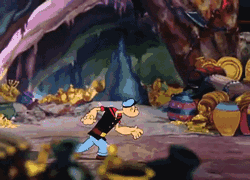

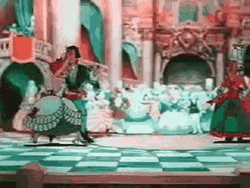


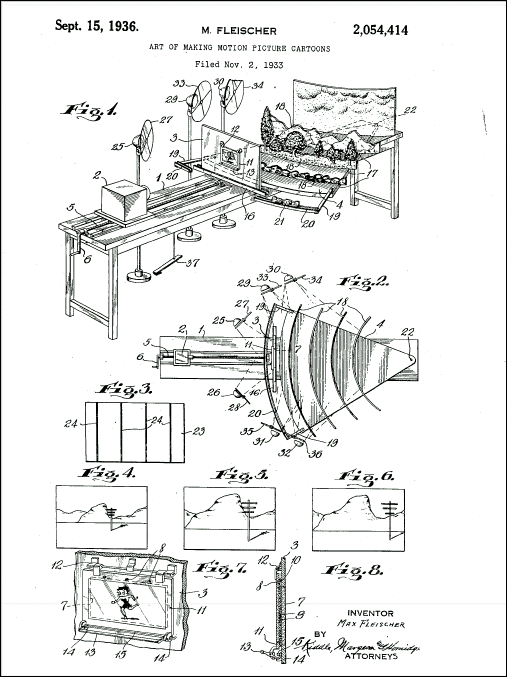
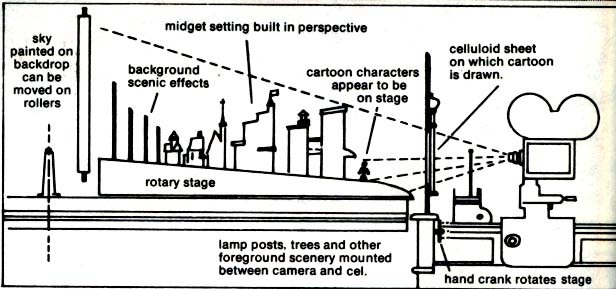
Discussion ¬